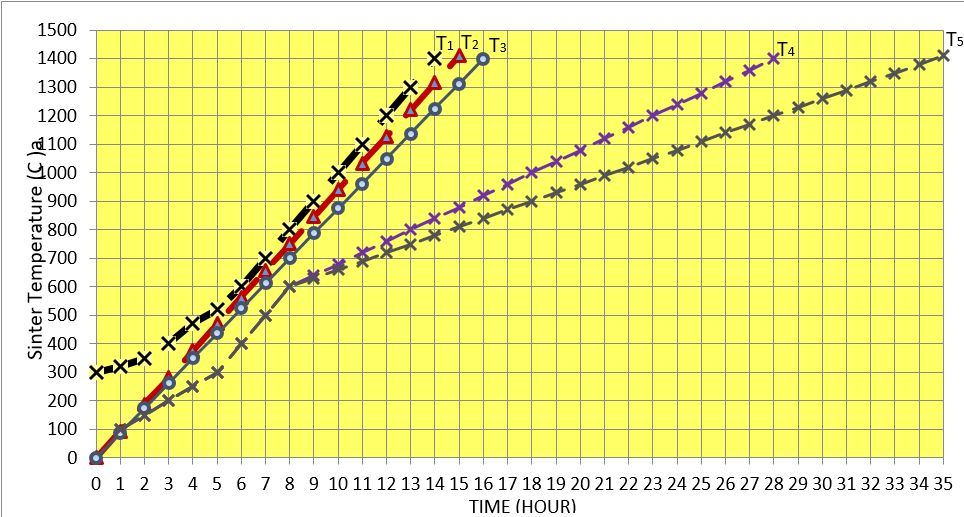Begining of the Lining, particules from old lining must be removed and the Lining area must be cleaned. lf necessary use a brush for cleaning.
LINING INSTRUCTION FOR BASIC BRICKS WITH KM-READY MIX
- 30-35 liters of water is needed for each 100 kg of KM-READY MlX.
- Mortar board can be cylindrical quadrangle shape with a capacity of 50-200 kg,
- First add powder mortar to the clean mortar board, add all necessity water over to the powder and then start mixing.
- Mixing time can change between 3-10 minutes according to mixer effectiveness. Mixing operation must continue untiI getting homogenous consistency.
- lf needed small amount of water can be added to adjust consistency, in this case mix the mortar two more minutes.
- Stiffness of the materiaI should be adjusted by an experienced applicator.
ALUMINA BASED LINING MIX
Performance and sustainability of lining of refractory bricks is related with right selection of brick and mix. Characteristic and composition of mix and lining bricks should be compatible. Consistency of mix is an important property on performance. Mix should have high plasticity after mixing with proper mixing solution and shrinkage after drying should be as low as possible. Heat setting mixes form ceramic bonding and air setting mixes form chemical bonding. Needed mix amount for brick lining is 3-5 wt % percent of total brick amount. Mixes must store under appropriate conditions. All equipment which are used for mixing should be clean. To get required consistency mix should be mixed with proper amount sodium silicate and water solution. Mixes which are chemically bonded should be applied in 30 minutes.
Start Up Procedure of Cement Rotary Kiln
Tempering of rotary kiln is a temperature equalizing process for preparing rotary kiln to clinkering reactions. Tempering extend the service life of bricks of rotary kiln by controlled drying and controlled thermal expansion. Recommended heating cycle for tempering according to brick amount and shutdown period is presented figure below.

